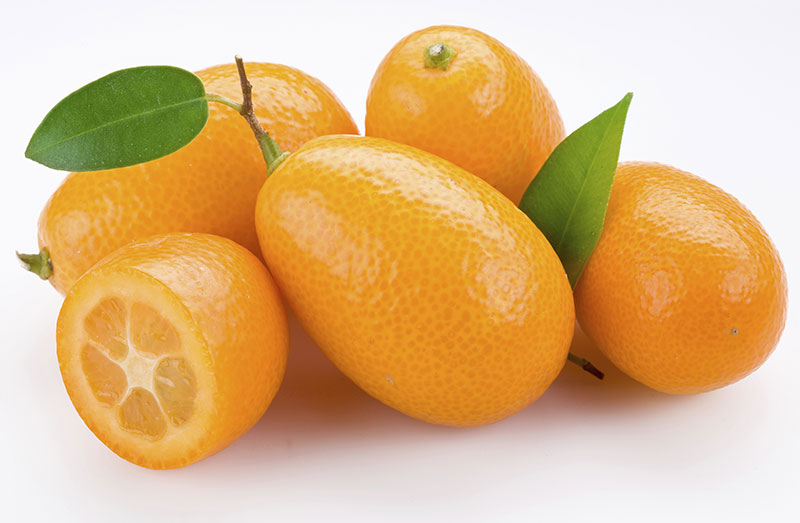Citrus, Kumquat

Availability:
Available January, February, March, April, October, November
Availability:
| J | F | M | A | M | J | J | A | S | O | N | D |
Notice:
on demand
Receiving/Storage:
Receiving Information:
To prevent damage from chilling, do not store oranges below 38 degrees F/3 degrees C.
Skin deterioration/decay: Exposure to ethylene may accelerate skin deterioration increasing susceptibility to decay. For best quality, keep away from ethylene producing fruits & ripening rooms. Mold: Keep storage area well-ventilated. Do not hold oranges for long periods of time; the longer the oranges are stored, the greater the incidence of decay-causing fungi. Storage/Handling: Store oranges in a well-ventilated area; keep cartons off the floor to prevent boxes from becoming damp. Keep oranges separated from foods that absorb odors such as eggs, apples, cheese, or butter. Temperature/humidity recommendation for short-term storage of 7 days or less: 45-50 degrees F / 7-10 degrees C. 85-95% relative humidity.
Description:
One of the only members of the citrus family that is entirely edible, the Kumquat’s skin is sweet and its juicy flesh has a zesty, somewhat tart, orange flavor with hints of tangerine. The ultimate heirloom fruit, Kumquat growing practices have been documented in China as early as 1178 A.D. The word Kumquat comes from the Cantonese kin ku, meaning “golden orange”. Grown in many parts of the world, including California, Florida, the Mediterranean countries, Japan, China, Indochina, Indonesia, Israel, Peru, and Brazil, the Kumquat is often crossed with other citrus fruits, such as the Lime (Limequat), the Lemon (Lemonquat), the Orange (Orangequat), and the Mandarin Orange (Calamondin). The Kumquat tastes best if it is gently rolled between the fingers before being eaten, as this releases the essential oils in the rind. It is delicious eaten on its own, unpeeled. It can be added to fruit salads or mixed salads, or used as an ornamental garnish. Kumquats are also cooked in stuffings, baked in cakes and muffins, used to enhance the flavor or sweet-and-sour sauces. The kumquat can be candied, marinated, made into jam or marmalade, poached in syrup, or preserved in alcohol. It blends well with fish and is particularly good as an accompaniment to poultry, duck or lamb.


